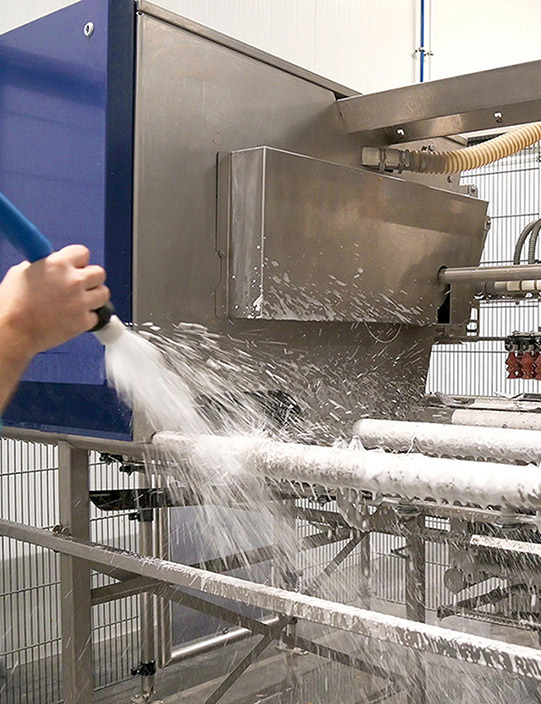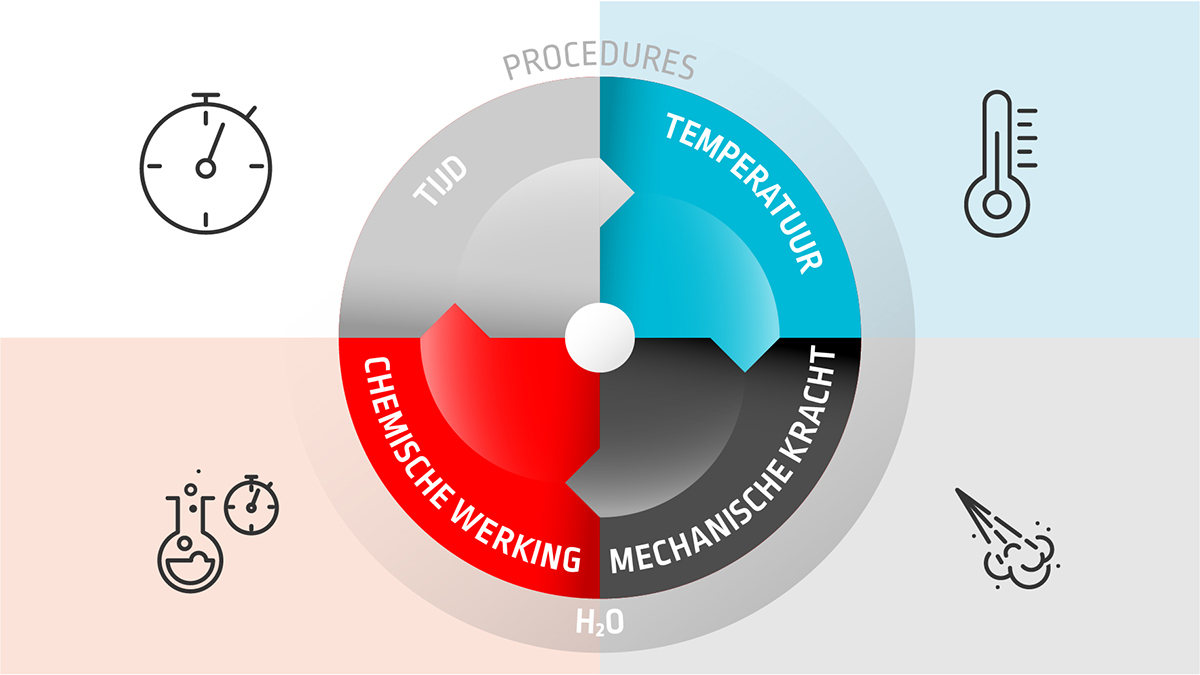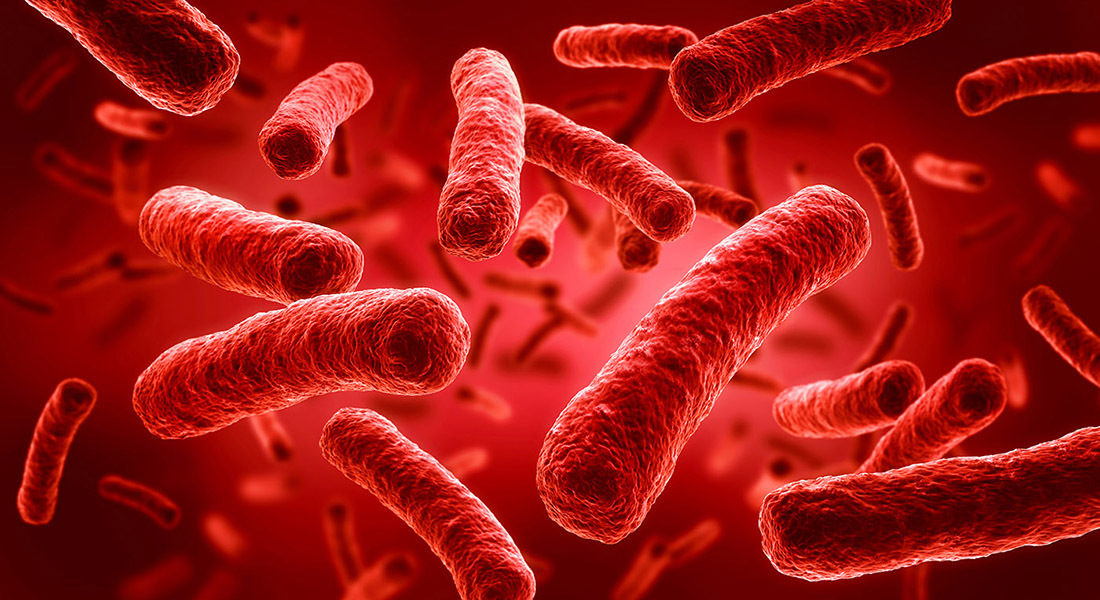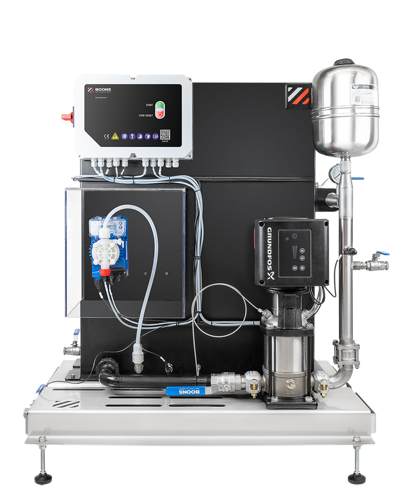A perfect production process starts with the right cleaning procedure
- Thursday 07 April 2022
- By: BOONS FIS
- Category: Foaming and disinfection installations
It is very important to thoroughly clean all equipment, work surfaces, the surroundings and tools to avoid (cross-)contamination. But what exactly is thorough cleaning, and are there procedures for doing this correctly?
To get to the heart of the matter we go back to the basic principle of cleaning. The main purpose of cleaning in the food industry is to remove dirt to in the first place avoid contaminating the food with waste. We also want to prevent chemical contamination and microbiological spoilage. Cleaning also brings benefits for the lifespan and functionality of the equipment used in production, while also ensuring a healthy and clean working environment for employees.
We make a distinction between two important aspects: cleaning and disinfection.


Cleaning
The first stage of cleaning in the food industry is to remove all visible dirt and product residues. Then a cleaning agent is applied using one or more reels and lances, preferably in the form of foam. This foam layer has the property of adhering longer to the parts and surfaces to be cleaned, resulting in a longer soaking time for the product. This soaking time can be set in advance for each production run. After the soaking time the foam layer is rinsed off with clean water.
Disinfecting
A disinfectant is applied to the cleaned parts and surfaces (after cleaning). There is also a soaking time here before everything is rinsed off with clean water. Employees in charge of cleaning simply select the appropriate function on the BOONS FIS equipment; foam, rinse or disinfect. This is no hassle because the cleaning systems 'by BOONS' FIS are controlled by a pressure booster installation that offers all the cleaning functions with the right product, at the right pressure and at the right flow rate. It all happens with one push of a button!
Cleaning at high pressure often gives a false sense of ‘cleaning better'. Good cleaning depends on several factors and their interaction, especially in the food sector.
'Sinner Circle'
The four universal factors of a cleaning cycle are brought together in the 'Sinner Circle': time, temperature, chemical effect and mechanical force. Boosting one of these factors improves the cleaning result, or another factor can be tempered.
For a certain type of cleaning the emphasis may be on one of the factors, so another (or several) factor(s) need to be adjusted.

The time means the period/duration that the (chemical) agent needs to do its job in getting rid of the soiling. The chemicals must obviously be given the time to adhere to the surface to be cleaned. This is also why BOONS FIS attaches great importance to using A-components for the venturi and compressed air, which makes sure that the chemicals can be used in optimal conditions.
The temperature is of great importance in a cleaning process. Rule of thumb: The higher the temperature, the better the cleaning. There are however also limitations with regard to safety, corrosion, protein coagulation and the effects on materials (seals, etc.). By default BOONS’ systems are equipped to handle temperatures up to 70°C, but high temperature applications can optionally also be provided.
The chemical effect is based on the efficiency of the agent used and the concentration used in relation to the soiling.
The mechanical force means the right balance between pressure and flow rate. It is generally assumed that the effectiveness of cleaning increases with a higher mechanical force, but this is not always the same as a higher pressure. For example, a cleaning process in the food industry is much more efficient at a lower pressure (approx. 20, 25 or 40 bar) combined with a higher flow rate.
The fifth element of 'procedures’ is also added here. They fully describe the cleaning or disinfection protocol. In principle a good cleaning and disinfection procedure create the ideal starting point for each production process in the food industry. These procedures describe what the cleaning process must result in down to the smallest detail. And each time anew. They cover which products are to be used, the stages, the time frame to be respected, the equipment used, etc.

One risk of an incorrect cleaning procedure: the formation of biofilms!
If cleaning procedures are not followed or carried out correctly or are not effective enough, besides dirt and product residues micro-organisms can also attach to equipment, conveyor belts or surfaces. This is when a biofilm is formed. It is difficult to remove and is a source of contamination in the production process/for food products.
One of the strategies deployed against already formed biofilms is the use of enzymes in combination with a disinfectant. Disinfectants are also used against biofilms. An example is chlorine dioxide (ClO2), a fast-acting, broad-spectrum antimicrobial agent that may be used in the food industry subject to the necessary approvals and certificates.
Hence, a food processing company has everything to gain by investing comprehensively in efficient and effective cleaning and disinfection operations. It is the crucial link in preventing recalls caused by contamination.

